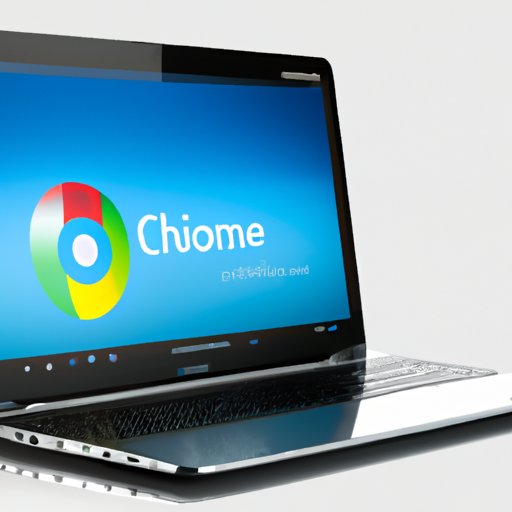
I. Introduction
Chromebooks can be sleek, lightweight, and efficient devices, perfect for users who prefer cloud-based work and speedy browsing. However, some users may need to run applications or programs that aren’t compatible with Chrome OS, or they may simply prefer using Windows as their operating system. In this article, we will explore the question of whether someone can install Windows on a Chromebook and why they might want to do so.
II. Step-by-Step Guide: How to Install Windows on a Chromebook
Before installing Windows on a Chromebook, there are a few prerequisites to check, namely having access to a Windows 10 installation ISO file, a USB drive or SD card with a minimum of 16GB, and a license key. Once all the materials are ready, here is a step-by-step guide for installing Windows:
1. Turn off the Chromebook and insert the USB drive or SD card with the Windows 10 ISO file.
2. Turn on the Chromebook and press the ESC key, then the F10 key to enter the boot menu.
3. Select the USB drive or SD card from the menu, and press Enter to boot from it.
4. Follow the on-screen prompts to install Windows. When prompted for where to install Windows, choose the partition labeled as “Drive 0 Partition 3” and format it.
5. When the installation completes, the Chromebook should restart, and Windows should be running.
III. Pros and Cons of Installing Windows on a Chromebook
After successfully installing Windows on a Chromebook, there are a few benefits and drawbacks to keep in mind. On the plus side, you can access Windows-only apps, back up files to OneDrive, and utilize Microsoft Office Suite or Windows-specific data management tools. However, on the downside, this may require more storage capacity, it can slow down the system, cause compatibility issues, and may ultimately void any warranties. Additionally, Chromebooks are not designed to run Windows and do not have the hardware necessary to support more intensive Windows applications.
IV. How to Dual Boot Chrome OS and Windows on a Chromebook
If you want the best of both worlds, you can dual boot Chrome OS and Windows on a Chromebook. Here are a few steps to help you understand how it works:
1. Back up all important documents.
2. Press the Esc + Refresh keys + Power button.
3. At the recovery screen, press Ctrl + D, then Enter.
4. At the warning screen, press Ctrl + D again to enter Developer Mode.
5. Download the Windows 10 ISO file to a USB drive or SD card.
6. Boot the Chromebook into Developer mode and enable USB booting.
7. Insert the USB drive or SD card into the Chromebook.
8. Exit the Developer mode and reboot to the USB drive or SD card.
9. Follow the installation prompts and partition the drive.
10. Reboot the Chromebook into Developer mode and press Ctrl + L to boot Chrome OS.
11. Install a boot manager like rEFInd and configure it to boot both Chrome OS and Windows.
V. Comparing Chrome OS and Windows on a Chromebook
When using a Chromebook with Windows instead of Chrome OS, you may notice some differences. Windows tends to be more accommodating for users who require more flexibility, including more extensive applications and data management. However, Chrome OS is faster and more secure than Windows. As Chromebooks improve in hardware and performance, running a Windows platform may not be necessary, but it all depends on your individual needs.
VI. Top Recommended Applications for Windows on a Chromebook
Running Windows on a Chromebook may mean that certain applications or programs could perform better or run more smoothly than others. Here are a few recommended applications that work particularly well on a Chromebook running Windows:
– Adobe Creative Suite
– AutoCAD
– iTunes
– Microsoft Office Suite
– QuickBooks
Each of these applications can enhance productivity and workflow on a Chromebook running Windows, but keep in mind that some of these applications require heavy memory usage and may slow down the Chromebook over time.
VII. Conclusion
In conclusion, installing Windows on a Chromebook is a relatively straightforward process, but it is not without its drawbacks. While it can afford greater flexibility in hardware and application usage, it can also be taxing on the system and may cause compatibility issues. Dual booting Chrome OS and Windows may be a more practical solution for those who require the functionality of both operating systems. As always, proceed with caution and do your research before installing anything on your Chromebook.





